There is a horrific period in America’s consciousness that is not generally covered in history books. It is a heart wrenching piece of U.S. history that is shrouded in greed, blood and injustice. It all started with the discovery of a single golden nugget.
The time and place: The 1849 California Gold Rush.
In the 1840s, Las Californias — the collective name for Alta California and the Baja California Peninsula — was the ancestral homeland of the indigenous Nisenan Maidu people. Their population had already been reduced to less than 100,000 people, due to the spread of European diseases — primarily a malaria epidemic — brought by Spanish and U.S. expeditions. Californios (people of Spanish or Mexican descent) made up approximately 14,000 of the other permanent residents, which included 2,500 “foreigners” (whites of non-Hispanic descent).
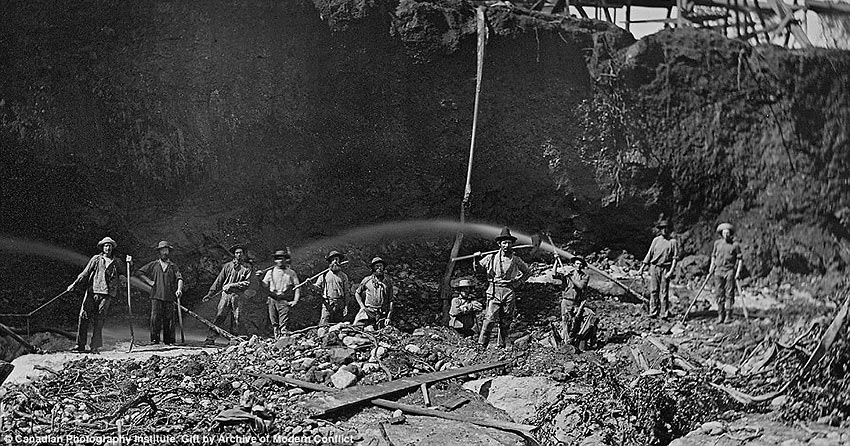
But, by 1849, more than 100,000 get-rich-quick migrants had arrived from all over the world — and they came for one reason: GOLD. In January of 1848, James W. Marshall discovered the first gold nugget, while reviewing the construction of Sutter’s Mill, situated in the Nisenan village of Koloma (known today as Coloma) on the South Fork American River.
Though Marshall tried to keep the discovery quiet, the news soon spread like a California wildfire, creating the largest Gold Rush in U.S. history. Californios called the area La Veta Madre (The Mother Lode), while others referred to the rugged migrants as 49ers, due to their year of arrival. Las Californias was still a part of Mexico, but eventually would sign the Treaty of Guadalupe Hidalgo, that ended the Mexican-American War in 1848. Two years later, California joined the U.S. union as the 31st state.
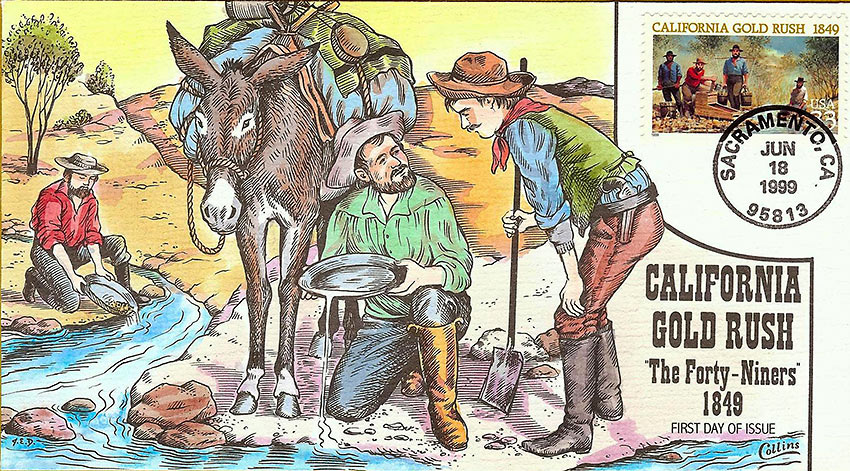
Camp settlements sprang up wherever gold was found, and then were abandoned when they ran out. The excessive use of ‘working the land’ caused a strain on the environment, prompting a drought and starvation. Then, in one of the darkest periods in U.S. history, genocide was committed by the new Anglo-American migrants, massacring thousands of Nisenan Maidu and Miwok tribal people or forcing them into labor. President Zachary Taylor had created a new federal agency — the Department of the Interior — and transferred ‘Indian’ affairs to its care from the War Department. Under Chapter 133, a white non-Hispanic American could claim Nisenan Maidu and Miwok land by simply presenting a request to the local justice of the peace. A white American could also kidnap Native American children and ‘adopt’ them — or keep the youths as unpaid field hands until they reached the age of maturity. Chapter 133’s most abhorrent clause stated, “In no case shall a white man be convicted of any offence upon the testimony of an ‘Indian’, or ‘Indians.’” With those 20 words, California effectively legalized the rape, robbery and murder of any Amerindian within the boundaries of the state.
White settlers went on a rampage, killing the people of tribal nations, with the reward of selling scalps for 25 cents and more than $5 for severed heads. The prices for enslaved children were up to $60 for young boys and up to $200 for young girls.
The law’s final section established a form of state-sponsored fascism: “Any able-bodied ‘Indian’ who shall be found loitering and strolling about shall be liable to be arrested on the complaint of any resident citizen of the county.”
Through the indiscriminate use of terrorism and murder, California’s 49ers carried out one of the most successful — and, until recently, largely unacknowledged — campaigns of systematic ethnic cleansing that the world had ever seen.
It was so successful that Adolf Hitler later spoke with admiration about the slaughter and the overall genocide of Amerindians. When Hitler was reluctantly selected as German Chancellor by the ageing president, Paul von Hindenburg in 1932, he took offence when the U.S. first verbally attacked the new Nazi Third Reich for discriminating against Germans of Jewish ancestry. He countered by labeling the U.S. as hypocrites for claiming the United States to be the ‘land of freedom,’ when African-Americans were clearly regarded as second class citizens. Later, with VE Day around the corner in 1945, many African-American army troops (then segregated until president Harry Truman) desperately wanted to stay in Europe for they were treated with great esteem by the populace as gallant liberators. People would rush out onto the streets, showering them with wine, flowers and kisses – almost a lynching offence in the U.S. Jim Crow south.
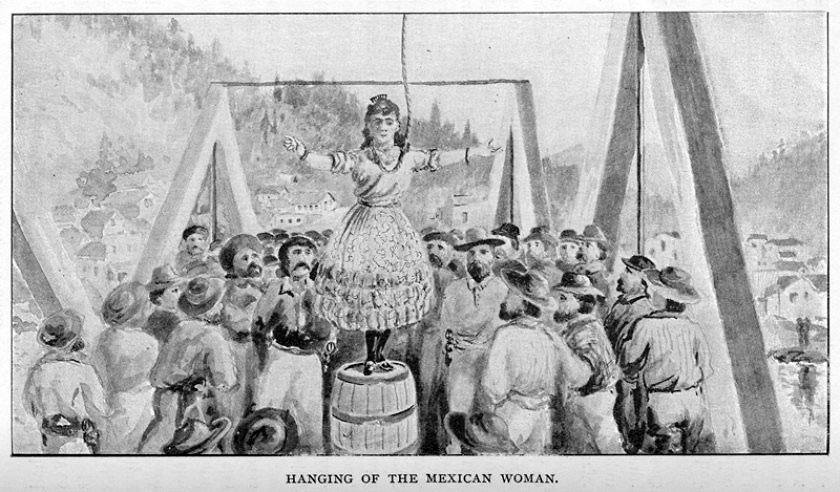
The Conquest of the Californios
Once the many inexperienced American gold miners realized that finding gold was not as easy as they expected, they took their anger out on the Californios. Racism and nativism became increasingly common, and white settlers began living on the Californios’ land without their permission. Soon violence erupted, where crops and cattle were destroyed. Californios were chased out of their ranch haciendas that had existed for generations. Those who would take a stand often found their homes torched to the ground, or were lynched by savage mobs. Californios that managed to stay in their homes, faced an extra tax and long courtroom battles.
African-American Slavery in the ’49 Gold Rush
White southerners brought black slaves into the California camp settlements as early as the summer of 1849. Slavery wasn’t popular in the mines, but there were no laws barring it in the early days of the Gold Rush. In Washington, DC, Congress was embroiled in a rancorous debate over whether the land acquired during the Mexico War, including California, would be admitted to the union as free or slave states. The nation was evenly divided, with 15 states free and 15 states slaveholding. California would tip the balance, becoming a state free of slavery. The back population of Gold Rush California was not large, comprised roughly of only one percent of the population. The significance of their story is not in their number, but in the moral force and courage that African-Americans were able to exert, which lead to the ‘Negro Rights’ struggles for freedom in California.
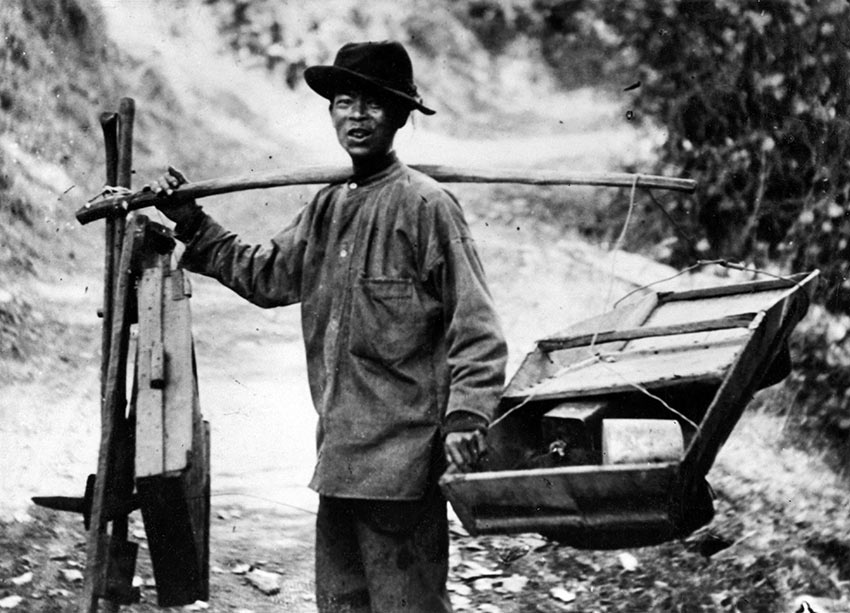
The Chinese from Canton
Chinese immigrants arrived by the thousands during the 1850s, and began mining in large numbers relatively late, but were subjected to the dominant prejudices of the time. Most of the ignorant Anglo-American migrants had never even seen a Chinese person before, and that ignorance led to anger. The Chinese tried to avoid direct confrontation with the white miners, but American rage boiled over in 1852. When the southern mining town of Columbia held a mass meeting, they passed a resolution forbidding “these burlesques on humanity” from mining in their town. Another miner’s tax was passed, targeting Chinese. Like Californios and Amerindians, Chinese were routinely harassed and driven out of diggings. Eventually they settled in their own mining camp, first known as ‘Camp Washington’ or ‘Washingtonville,’ which had already had been mined and discarded by American miners.
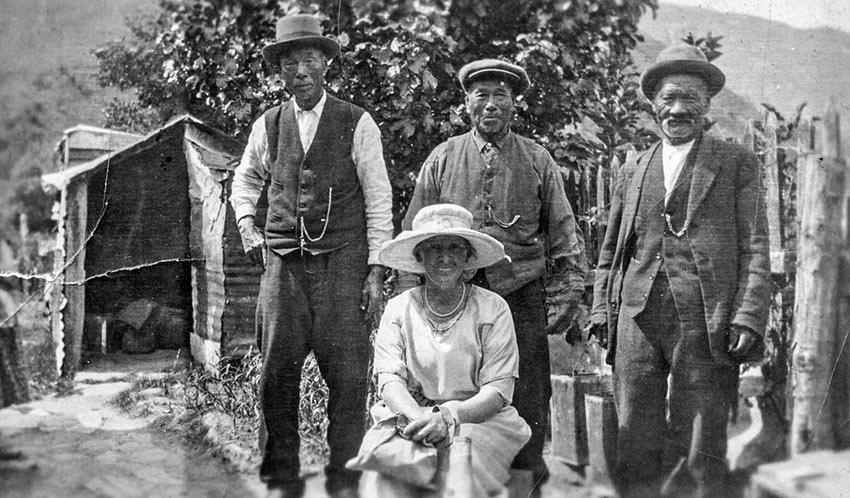
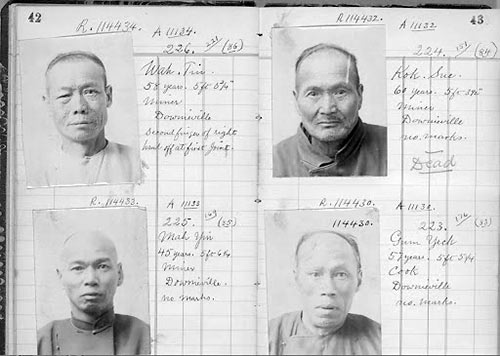
Soon the camp was called ‘Chinee’ or ‘Chinese Camp’ and ‘Chinese Diggings.’ An 1860 diary indicates that Chinese Camp became a small metropolis, comprised of a post office, a bank and homes to at least 5,000 Chinese laborers, with many eventually living in urban comfort. The new Chinese-Americans worked the mines and were successful where other miners had given up. The gold lay just below the surface of the ground, but the work was hard due the lack of nearby water. All the gold had to be hauled to a creek to be cleansed. While placer mining had played out in much of the Gold Country by the early 1860s, it was still active at Chinese Camp as late as 1870. An 1899 mining bulletin listed the total gold production of the area close to 2.5 million dollars.
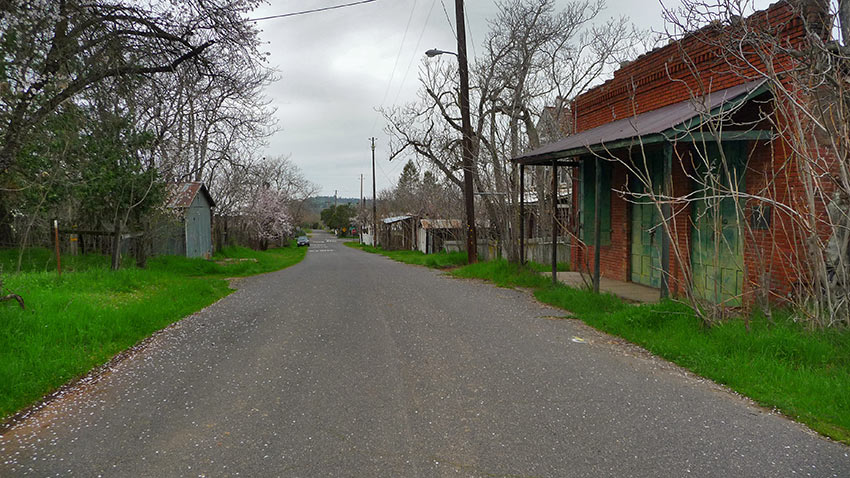
Historical Sites, Now
Today, there are a number of high profile camps to visit — which includes Chinese Camp. Fortunately, some of the remnants of the settlement still exist today. It’s easy to find — right on Highway 49 about 5 miles south of Jamestown. The historical landmark is located at the Northwest corner of State Highway 120 (P.M. 15.9) and Main Street in Chinese Camp. This site is part of the Mark Twain Bret Harte Trail.
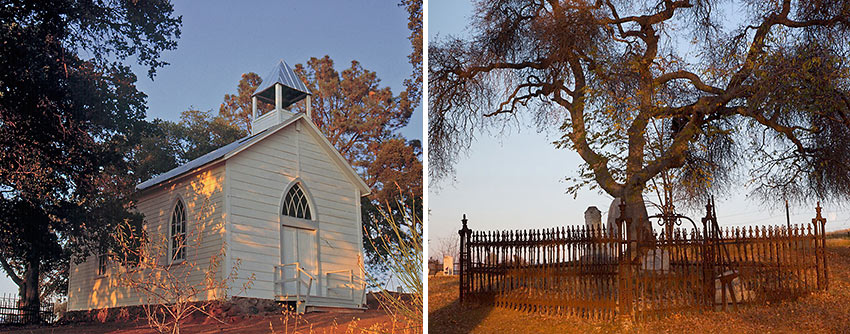
Chinese Camp
Chinese Camp currently has less than 200 residents, but there is ample evidence of its colorful past, despite disrepair and some structures surrounded by barbed wire. The Saint Francis Xavier Roman Catholic Church, established in 1849, is the oldest church in the county. It sits on a hill next to a cemetery, overlooking the town, making an ideal stop for a visual overview of the camp. The first post office and store opened in 1854. As the town grew, Chinese Camp became a transportation hub for stagecoach lines and express offices. The town was composed of hotels, two joss houses (Chinese temple of worship), blacksmith shop, school, and the first Adams Express, which existed before Wells Fargo was established as a viable business.
Gold Country South
Located near Yosemite National Park, Tuolumne County is the recreational and cultural center of California Gold Country. It is an area of immense beauty with rivers flowing through lush canyons and forested mountains towering above. The Nisenan Maidu coined the name Chullia, which translates to paradise. Like most tribal nations, they did not believe in ownership of land and space — how can one own the air?— but as stewards for its protection. As you explore Gold Country, keep in mind that history is written by the victors; so you may experience a somewhat sanitized Anglo version of past events, despite some park rangers doing the opposite. I remind myself that the 1849 California Gold Rush is very much part of our heritage as Californians and Americans. After all, there’s a chance that I wouldn’t even be currently living in Southern California if it weren’t for the Gold Rush.
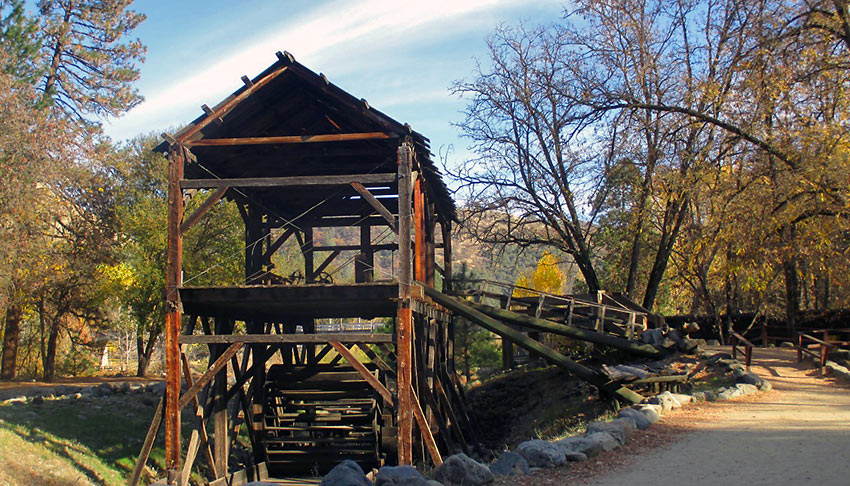
Marshall Gold Discovery State Historic Park
This is where it all began: the sawmill where Marshall first discovered gold. There are demonstrations at a working replica of the original mill, museum and several restored historic buildings now part of California’s state park system. With a map from the museum, you can guide yourself on tours of the town, the cemetery, the Monument Trail, and the Monroe Ridge Trail.
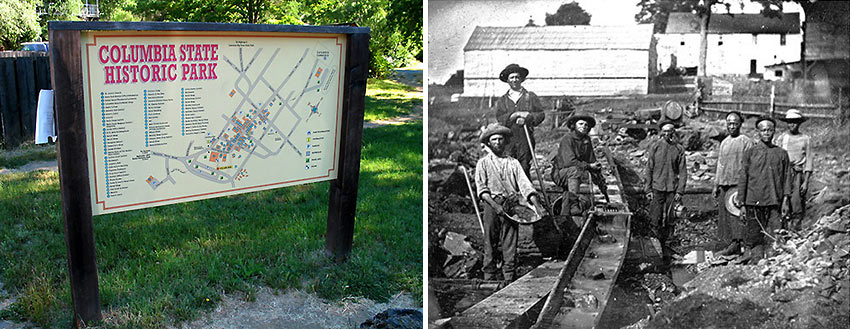
Columbia State Historic Park
Established in 1850, Columbia State Historic Park is the best preserved of all California Gold Rush towns. Once known as the Gem of the Southern Mines, over one-half billion dollars in gold (at today’s currency rate) between the 1850s and 1870s was mined in the area. At that time it was the state’s second largest city. Today it is a year-round getaway that offers a unique blend of museums, displays, town tours, live theater, shops, restaurants and saloons. No other location offers a better overview of California’s Gold Rush history. Docents (trained volunteers) appear in costumes throughout the park, and interpret Anglo life in a California Gold Rush town with living history demonstrations. Events include the annual Columbia Diggin’s, which is a re-creation of the tent town days of early Columbia.
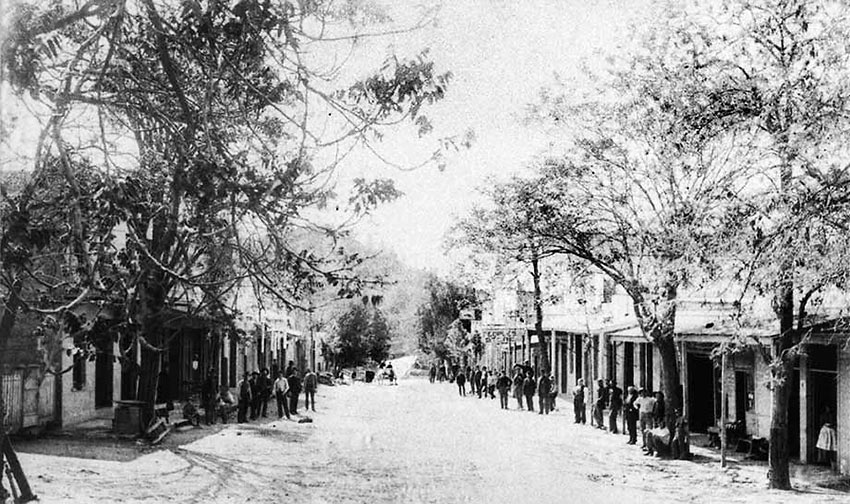
Angels Camp
Angels Camp is nestled on scenic Highway 49, with a history similar to that of many California Gold Rush towns. In 1848 Henry Angel opened a trading post and made a fortune selling items at grossly inflated prices. A single egg could be sold as high as $25 in today’s currency. Soon there were as many as 4,000 miners working the surface gold of Angels. Today, Angels Camp’s population is nearly 3,000, and the entire town remains honeycombed with miles of mine tunnels. One of its most popular attractions is Moaning Caverns, an immense limestone miracle with a main cavern large enough to hold the Statue of Liberty, which is open to the public.
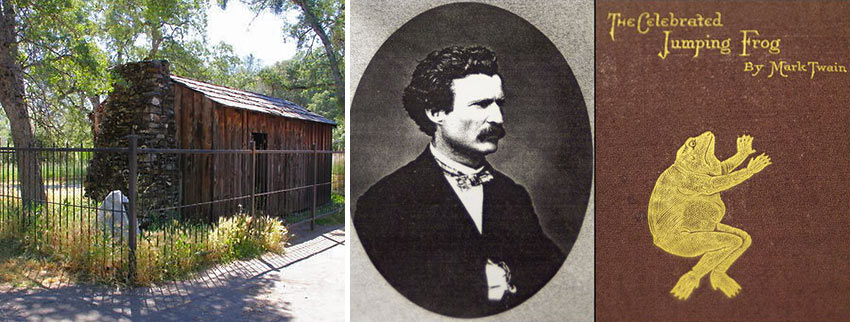
Mark Twain Cabin – Jackass Hill
At the top of Jackass Hill, west of Tuttletown, sits a replica of the cabin where Mark Twain spent the winter of 1864. Twain heard a story about a jumping frog in the saloon at the Angels Hotel in Angels Camp. He returned to the cabin and wrote The Celebrated Jumping Frog of Calaveras County, his first great success as a writer. The California Historical Marker is located 1 mile northwest of Tuttletown on Highway 49.
Twain was a man of remarkable insight and wisdom, never afraid to look history straight in the face. Like his Huck Finn in The Adventures of Huckleberry Finn (1885) – often named the Great American Novel – Twain was raised close to the Mississippi River, and overcame the entrenched values of the U.S. during that era, particularly racism. And as Americans, we will always be proud when remembering his quest for truth and justice for all.
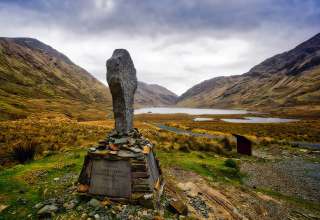



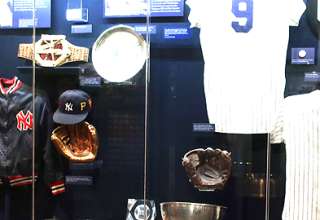
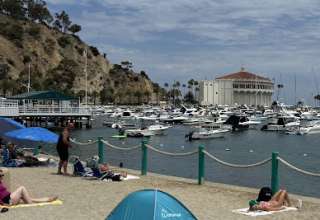



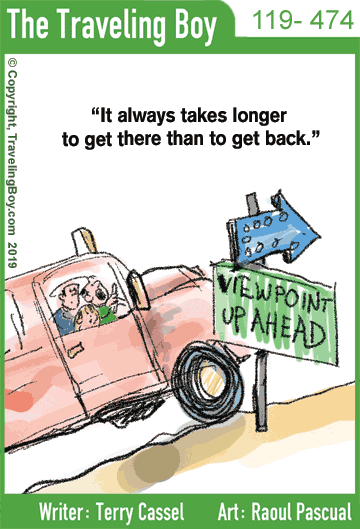














Matthias Kramer
May 20, 2020 at 2:55 pm
Thank you very much for this highly interesting article, Ed! You were indeed mining deep into California’s past.
Ed Boitano
May 21, 2020 at 10:35 am
Matthias – And thank you very much for taking time off from busy schedule to send me this comment! It is comments like yours that keeps us going.
Lynda Geach
August 18, 2020 at 9:03 am
I have just read this article and it left me so angry that much of the detail included has passed by many, including I suspect many Americans Some of our family ancestors were part of the gold rush, living in Sutter creek and I would be so ashamed to think they were involved of any of this. What an eye opener. Thanks
Ed Boitano
November 7, 2022 at 6:00 am
Thank you, Lynda. I appreciate your sending me your personal feelings.